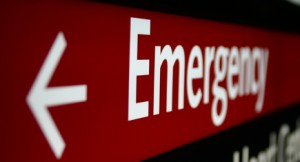Watch Your Head! Returning to Play After a Head Injury
 As athletic trainers, parents and coaches have become more aware about the dangers of sports-related concussions, physicians are recommending that concussed athletes take care not to simply “walk off” potential brain trauma. Especially when recent studies have shown just how damaging concussions can be to an athlete’s brain.
As athletic trainers, parents and coaches have become more aware about the dangers of sports-related concussions, physicians are recommending that concussed athletes take care not to simply “walk off” potential brain trauma. Especially when recent studies have shown just how damaging concussions can be to an athlete’s brain.
Anyone who has a head injury during a sporting event needs to immediately stop all activity and not return to play that day. Being active again before the brain returns to normal functioning increases the person’s risk of having a more serious brain injury.
Kristin Thompson, athletic training director for Bon Secours Hampton Roads Health System, notes that athletes “tend to hide symptoms” of concussions and head injury, which reinforces the need for education. Every person involved in a sporting event (every coach, player, teacher, parent, and trainer) needs to be trained to know the symptoms of a concussion. And all need to know the importance of getting medical help when a player has a head injury.
Evaluation
The decision about when a player can safely return to play must be made by a doctor. The doctor decides on a case-by-case basis. Things that help the doctor decide when the player can return to play include the player’s:
- Symptoms
- Medicine use
- Medical history
- Concussion history
- Sport and the position
- Ability to stand and keep his or her balance
- Ability to pay attention and to answer questions that test learning and memory
Doctors and other concussion specialists agree that a player must not return to play until symptoms are completely gone, both at rest and during exercise or exertion. Children and teens have longer recovery times. So they may have to wait longer before they can return to play.
Recovery
The first treatment for a concussion is rest, both physical and mental. When symptoms are completely gone, the player may begin light aerobic exercise, such as walking. The return to play needs to continue in a gradual, step-by-step way. If one or more symptoms return, the player needs to go back to a level of activity with no symptoms for at least 24 hours before trying to do more. A doctor must always make the final decision about whether a player is ready to return to full-contact play.
These general rules apply to return to play after a first concussion. After more than one concussion, the player will most likely need a longer recovery time. Because the risk for a second concussion is greatest within 10 days of the first concussion, it’s very important to make sure the player is completely recovered before he or she returns to play. A second injury, even if it is not a head injury, could cause permanent brain damage or death.

